
Robert A. Lee Community Recreation Center
Iowa City, Iowa
(Exact daily schedule to be announced closer to the event.)
by John Upshaw on 2025/12/22

by John Upshaw on 2025/09/30
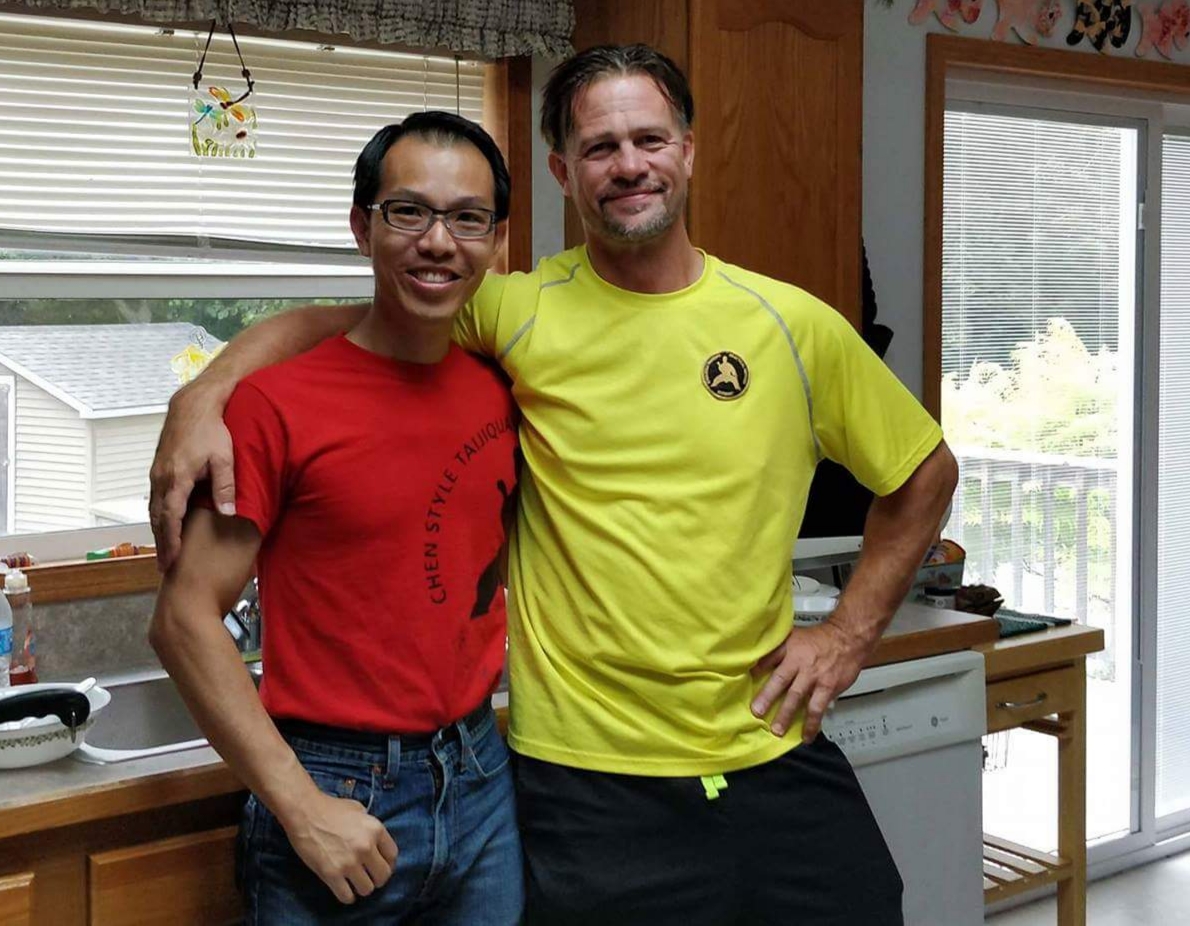
by John Upshaw on 2025/09/20
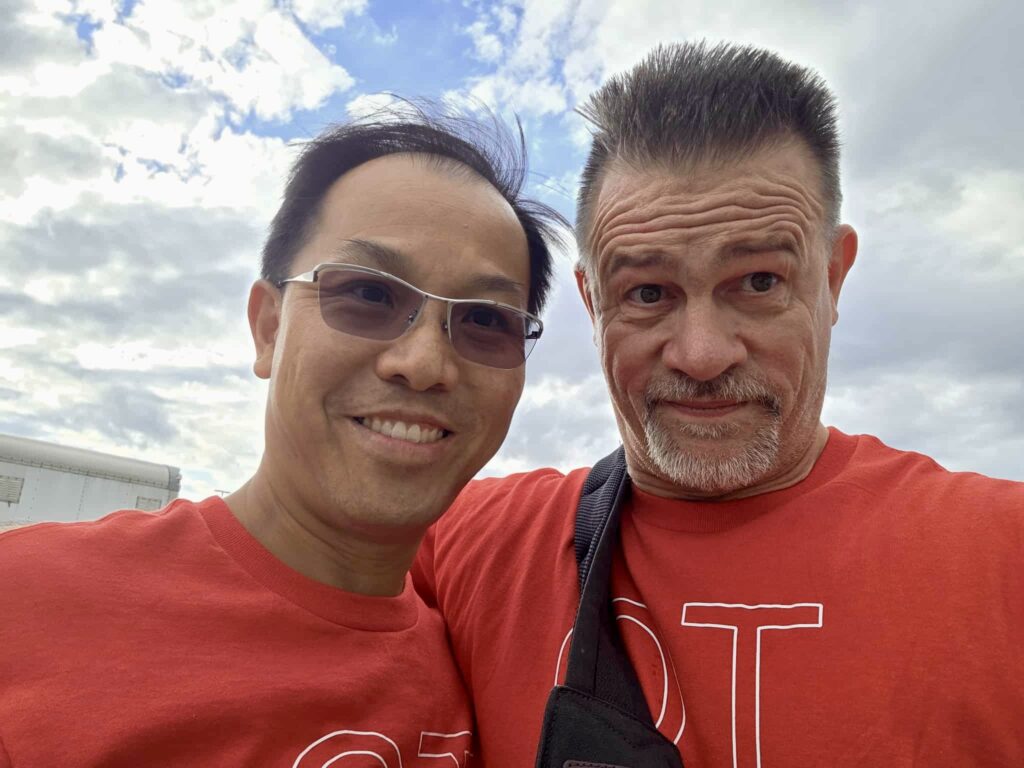
In this morning’s practice with Kelvin, he provided constructive feedback and we engaged in meaningful Taiji discussions. Two major themes emerged:
Using Joint Rotation to Create a Solid Structure
Exploring how rotation and counter-rotation of the joints create stretch, connection, and stability throughout the body.
Kelvin initially pointed out that I was losing my structure whenever I moved because I did not have an adequate “wall” behind me. To create the line I required, I needed to rotate my kua to “put it in the heel.” This revealed the principle that rotating the joints creates a stretch that connects one joint to the next.
The combination of joint rotation and stretch builds a solid structure. When two joints rotate in opposite directions, they generate a twist that cinches up the connective tissue and ligaments between them. These paired rotations exist throughout the body and across the entire form.
One clear example is the opening of the elbow: the forearm and bicep rotate in opposite directions, which not only opens the elbow but also creates a stretch and the capacity to function in two dimensions. This principle is especially visible in the posture of “lifting and blocking” within Cannon Fist, where the rotation, stretch, and connection produce a stable yet dynamic structure.
Reflections on Matching in Taijiquan
Matching in Multiple Dimensions – Recognizing that while it is possible to jam or match force in one dimension, higher-level practitioners often apply force across multiple lines, requiring matching on more than one plane simultaneously.
Another important discussion we had was about matching. During a private lesson with Master Chen Zhonghua in 2015, the main theme centered on matching power, length, and angle.
In my recent discussion with Kelvin, he emphasized that when matching an angle, an opponent may establish lines in two separate dimensions, both of which must be matched simultaneously. This was significant information for me, as it expanded my understanding of why a single match may not be sufficient.
In practice, when doing push hands with my more advanced Taiji brothers, I have often been able to jam them in one dimension. However, they frequently apply force across multiple dimensions, making a single match or jam ineffective.
This morning’s training with my Taiji brother Kelvin offered excellent insights into the depth of matching. It highlighted that true skill lies not only in neutralizing one line of force but also in perceiving and connecting with the multiple dimensions of power being expressed.
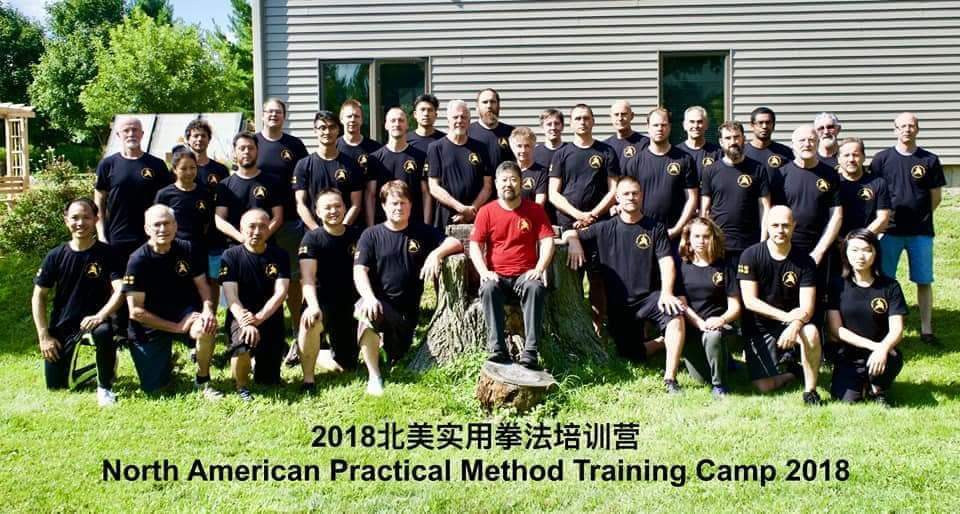
by John Upshaw on 2024/01/22
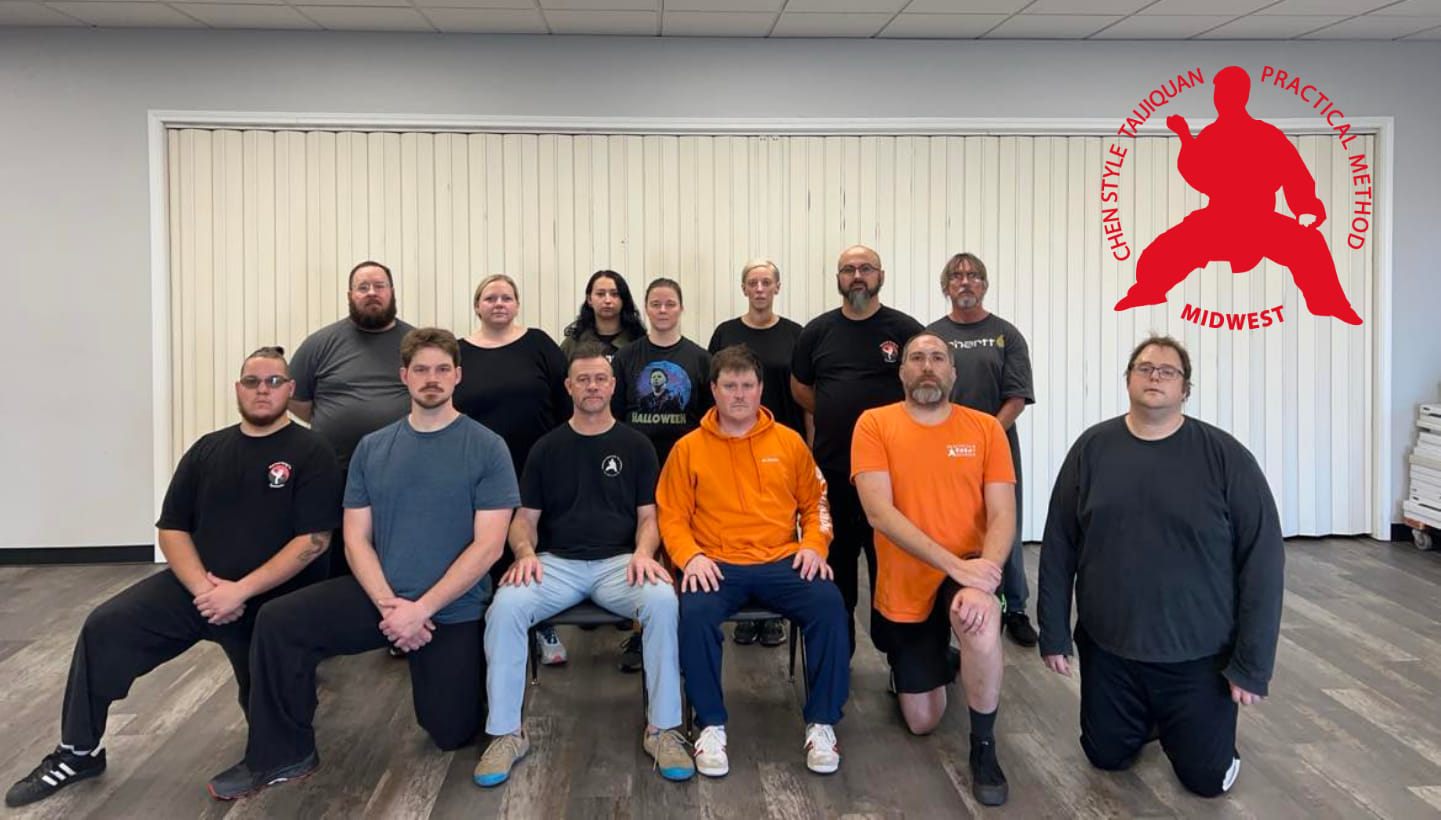
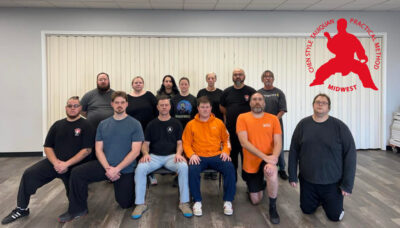
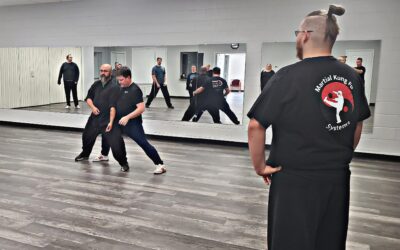
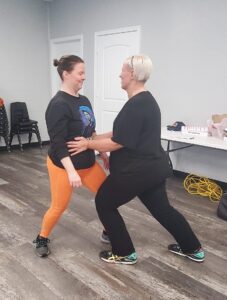
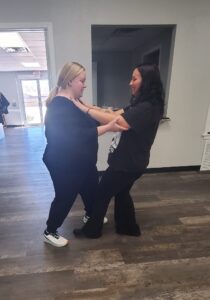
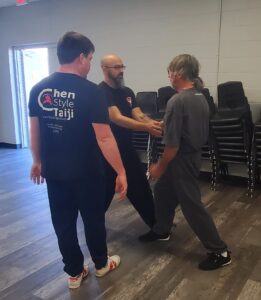
by John Upshaw on 2022/11/01
by John Upshaw on 2022/10/19
When life started happening again after the pandemic, assuming it is after, I felt that my push hands had lost a certain quality. Before, my ability to get in and squeeze out all the space was good. Since 2020, it wasn’t the same. I had lost something. I didn’t know what “it” was, and it greatly bothered me for the last year and a half. So, I went searching for it in New York City…and yes…this was my actual intention when I decided to see Master Chen Zhonghua at the NYC workshop.
Read more
by John Upshaw on 2022/08/18
by John Upshaw on 2022/03/27
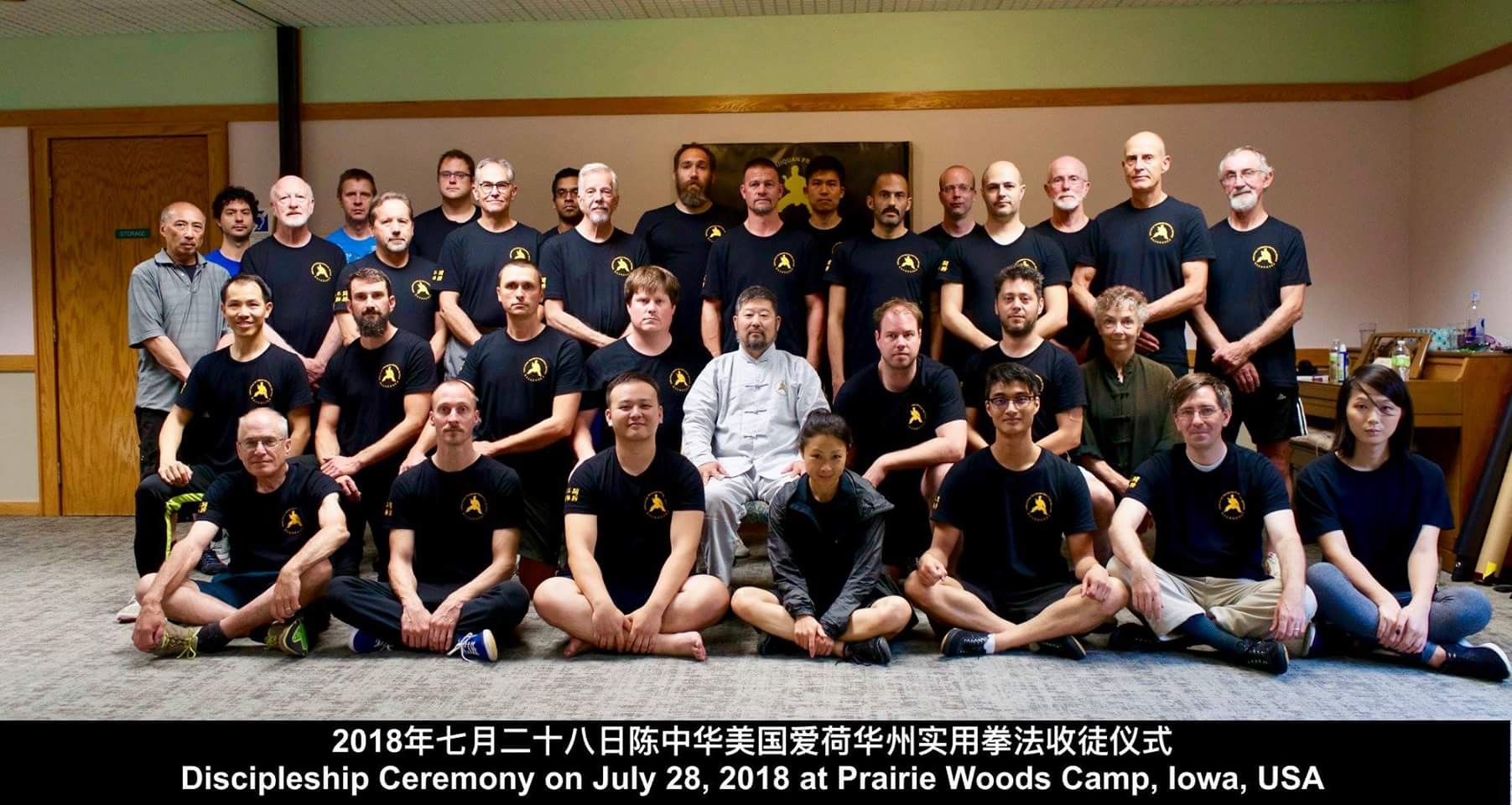
by John Upshaw on 2022/03/05
by John Upshaw on 2021/10/29
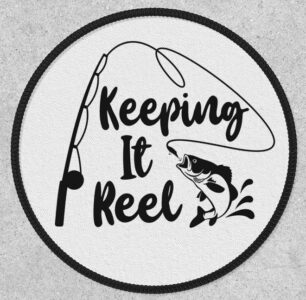
The last move we worked on in today’s lesson was the second move in Jin Gang Dao Zhui (Buddha’s Warrior Attendant Pounds Mortar), when the dantien turns right, left elbow comes in on a positive circle and the right hand goes out in a negative circle. The arm (hand) is out of control and the dantien is in control. This means the hand is expressed yet is passively powered by the dantien.
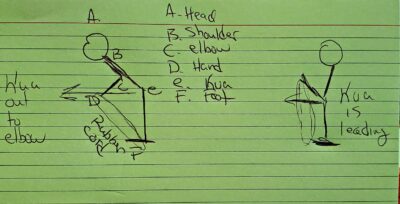
Rubber Cord Training for Kua
Lock head, shoulder and elbow into one piece. Make sure the elbow is being pushed into the palm.
Have rubber cord under lead foot and in lead hand.
Get into position (see picture). The upper body (waist up) and lower body (below waist) are solid like 2 separate pieces of wood.
Shove front kua forward into the elbow that goes into the hand holding the rubber cord. This action from the kua makes the back straighten.
The strength of the rubber cord has to be more than you can handle. Make the tension “real” and size of cord needs to be just right that the power is coming from the kua and not other body parts.
by John Upshaw on 2021/07/27
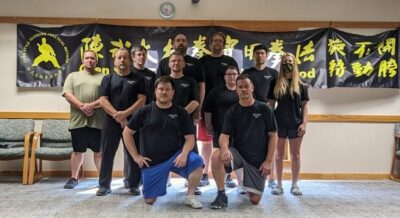
The North American Practical Method Training Camp was back on! Most people had limitedly physical contact practicing Taiji with another person for over a year due to the pandemic. In organizing this we made some adaptations and innovations as a means of overcoming the current challenges that were presented to us by the global crisis. It was phenomenal learning experience! Read more
by John Upshaw on 2021/05/26
I went to the park to train. It’s the end of the school year so schools have picnics. 5 girls approached me and wanted to learn…so I taught them the first posture. Two school officials approached me and inquired…I gave them my background. It’s a private school and the asked me to teach Taiji next school year. I continued to practice…between yilus a group of 15 kids approached me and wanted to learn….public training is good recruitment of students…
by John Upshaw on 2021/05/24
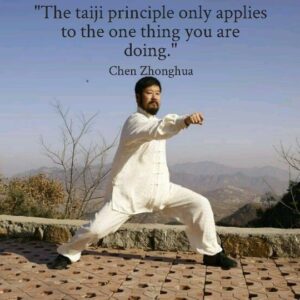
The purpose of having a training is to make practice intentional. It is important to note that I train one thing at a time. These goals are not exclusive; however, it is my main focus. Read more
by John Upshaw on 2021/05/21

Yesterday I was pushing hands with a student of mine, Randi. I was focused on maintaining my core and having everything rotate around that. I am training a recent breakthrough. Read more
by John Upshaw on 2021/05/17
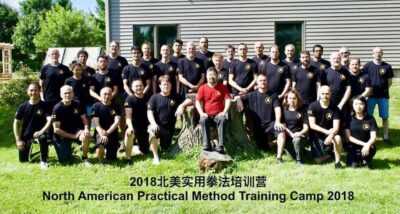
Location: Prairiewoods Franciscan Spirituality Center
Date: July 22-25, 2021
Read more
by John Upshaw on 2021/05/09
by John Upshaw on 2021/03/18
For my yilu correction, after my front foot goes out during Lan Zha Yi (Block Touching Coat), as my foot settles on the ground, my front foot and knee needs to significantly close more. After this, or during later on in my training, the knees and below doesn’t move and my waist moves forward into position through the action of the kuas making an adjustment, which moves the waist forward without disturbing what is underneath. This then becomes a scale, lower body as the rod and elbow as the counterbalance.
by John Upshaw on 2020/12/11
• Whenever you do a move with the arm, it doesn’t effect the torso.
• Then enhance the size of the arm movement.
• Then when you do arm movements, the torso can move up and down. They are still functioning separately.
Movements are separated when:
• If then they’re considered touched.
• If body specifications match, it is called real.
• movements need to be totally independent.
by John Upshaw on 2020/11/27
I started learning Chen Style Taijiquan Practical Method in 2005. I learned a rough version of the yilu within nine months. I am a persistent person that continuously seeks progress. As the years have gone by I have missed essential details that are in the form, even though many people would not recognize those missing pieces. Let face it, a form with 81 postures in which each posture has several movements/stretches/rotations in it is a huge undertaking!
by John Upshaw on 2020/11/12
On line Yilu class November 12th 2020 by Johnny Upshaw
• When going down on the left side and brush the knee, the shape/ structure does not change.
• Going down while retaining our structure creates vertical Peng, which we try to train.
• Keep the structure is not to lose the Peng. Don’t retreat and don’t drop.
by John Upshaw on 2020/11/03
Master Chen had Kelvin Ho restate the content from yesterday’s instructions. The hand and shoulder are on the same line or track. The shoulder is fixed. The elbow goes up into that line, which pushes the hand out. The elbow is the lead.
by John Upshaw on 2020/10/27
Master Chen is showing us something that we cannot do. So, if we fake it, we are not learning. It is something we cannot do. The learning is to show us our deficiencies not our efficiencies.
It is very important that we never become comfortable. We must be in that position that we are uncomfortable, and stay in that position. We need to stay in that state of uncomfortable without changing our structure. This will allow our us to re calibrate.
In yilu, we must do it one move at a time until we reach our fullest extent and then reset. Master Chen is trying to bring back the original idea, not continuous. Train each move separately.
The stretch from knee to kua the thigh lengthens. We need to go into the uncomfortable position that we are about to fall down or we do fall down.
We need a clear net gain without changing shape. This net gain can only be created with the stretch and no rotation. This needs to be applied in push hands and in practice. To train this you cannot have wobbly moves. If the opponent creates a net gain during push hands and you don’t that goes into you and you lose. Net gain equals net distance.
by John Upshaw on 2020/10/26
Today we worked on isolating a movement and twisting the towel. During previous training sessions we did it to feel the trajectory and range. Now we do it with a restriction. The restriction that we did it with was not to move the knee. The main action we were training was twisting the towel with a stretch, not a rotation. Read more
by John Upshaw on 2020/10/22
On October 20th, 2020, during an online class Master Chen Zhonghua shared and demonstrated an important action of the knee that has not been disclosed before. Prior to discussing the important action, I shall discuss some important functional and structural aspects of the knee as a means of providing a context to help the reader conceptualize how this recently disclosed information is applied in practice and applications.
by John Upshaw on 2020/10/13
Foundations on line notes ~ October 13th 2020 by John Upshaw
Kelvin Ho lead us through a positive circle stepping back drill. With our front hand out, we would step back with a rear foot causing us to go lower, we rotated/shifted from our front kua to our rear kua, rotating the elbow in on the same line with hand staying fixed on that same line…like a spear, tip pointed at the opponent. By using my kuas in this manner, my range increased.
by John Upshaw on 2020/10/08
I named this the Yilu Project because I have taken some steps to “clean up my yilu”, and this is my baseline for measuring progress or the lack thereof. I have been attending weekly online classes with Master Chen Zhonghua. Having access to consistent corrections on my yilu and foundations is a “once in a lifetime opportunity”! Additionally, I have been getting feedback from my Taiji brother Kelvin, who has a very good eye for details. Feel free to point out mistakes.
Respectfully,
John
by John Upshaw on 2020/10/08
The actions need to be precise/ accurate. There is only one way to do it right. The adaptation you can get away with it. Read more
by John Upshaw on 2020/10/06
October 6th 2020 foundations On-line Class
Today we worked on staying on the line, which exists between the front shoulder and the front hand, and beyond with the same trajectory . The elbow pushes into that line, Which is activating the elbow, thus forcing the handout. The elbow withdraws in a way that integrity of the line between the shoulder and the hand remains intact.
by John Upshaw on 2020/09/25
“The movements of the body are in the Dantian and nothing leaves the dantian. Only power gets out of the Dantian.”
The quote above from Master Chen Zhonghua and his assigning me to write on the dantian sent me on a journey of understanding…and to be forthright, I got stuck. I over thought things and I had difficulties “getting the ball rolling” or rather the dantian article. So being an educated person, I did what students do, and gathered up my information from the online lecture and from past videos from Master Chen Zhonghua.
by John Upshaw on 2020/09/24
by John Upshaw on 2020/09/24
The Central Vertical Line
The central vertical line (CVL) is an internal stretch that exists between the bau hui to the hui yin. I have heard Master Chen refer to this as a “rod” in the body. It should be present whether we’re doing foundations, form or push hands.
When I’m starting with students that need to strengthen the CVL, I have them do a guided imagery drill. The guided imagery was taught to me by Richard Johnson when I attended a week long workshop with Master Chen in 2011. I adopted the guided imagery and added a partner component as a means of enhancing the physical understanding and strengthening the central vertical line.
by John Upshaw on 2020/09/21
I entered into class late and saw everyone doing double positive circles. He instructed us to do it in a higher stance with our elbows attached to our waist. Read more
by John Upshaw on 2020/07/22
by John Upshaw on 2020/06/14
In the previous section I covered The 4 Essential Taijiquan Techniques, which included Peng, Lu, Ji & An. I left that lesson on here for review and quick reference. In this finial section, part 3, I will cover The 4 Corner/Auxiliary Techniques, which include Cai, Lie, Zhou & Kao. It is located after section 2. Subsequent information from Master Chen’s writing will also be included in the descriptions. For those that are interested, I will moderate a Zoom discussion about all 3 sections this coming Sunday July 5th at 8 am CST. If you want to attend and can’t, please message me and we can set up a private Zoom session.
